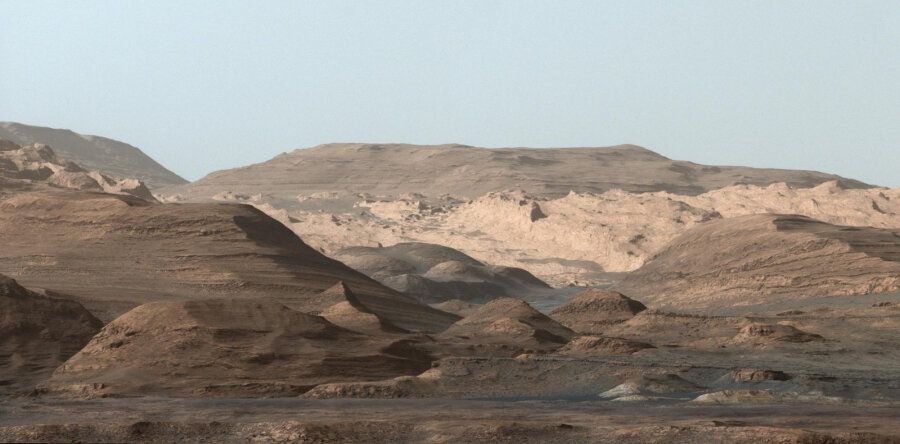Photos can’t do some places justice – nor can any level of sophisticated remote sensing. That seems to be the case for Gale Crater. Curiosity has been wandering around the crater for almost the last nine years. Scientists thought Gale crater was an old lakebed, and it was specifically chosen as a landing site to allow Curiosity to collect samples from such a lakebed. But new research from scientists at the University of Hong Kong shows that most likely, the samples Curiosity has been analyzing during its sojourn didn’t actually form in a lake.
The researchers suggest that the samples Curiosity collected were deposited as part of dust storms over millions of years, covering up any existing lake sediment that might once have existed in Gale crater. The key to this assertion is hydrochemistry.
Postgraduate researcher Jiacheng Liu used chemistry measurements, x-ray diffraction, and pictures from the rover itself to analyze rock samples and estimate the geological processes that formed them. One big discrepancy was whether or not the samples formed in water. In geology, some elements are considered “mobile,” which means they dissolve easily in water. Properties of that water, such as whether it is acidic or saline, impact the types of elements that are considered mobile.
Elements can be considered “immobile” if they are not soluble in water, and tracing them would allow researchers to determine where water flowed. Dr. Liu found that immobile elements, which usually are not washed away by water, had much higher concentrations at high levels in the rock. That type of weathering would usually be seen in soils rather than lakebeds.
Iron’s prevalence adds another data point. Dr. Liu showed that concentration decreased with increasing weathering, pointing to a reducing atmosphere typical of ancient Mars. All this data points to rocks that formed under an open sky in a desert rather than on the floor of a lakebed.
Just because the samples weren’t what scientists expected doesn’t mean Curiosity wasted its time, though. Any insight into the Martian climate, including any gleaned from the rocks Curiosity collected, is valuable in Martian weather models and potential human exploration plans. It also points out how difficult it will be to pick the right landing site of any future mission simply from remote sensing alone.
Learn More:
UHK – NASA rover has been exploring surface sediments, not lake deposits, for last eight years: study
Science Alert – Curiosity’s Wandered The Same Giant Crater For 9 Years. It May Not Be What We Thought
Space.com – Giant ancient lake in Gale Crater on Mars? New study offers different view.
UT – Dune Fields in Gale Crater Tell the Story of Mars’ Shifting Climate Over Eons
Lead Image – Picture of Gale Crater taken by Curiosity shows striated rock outcroppings that might have been formed in the open air rather than at the bottom of a lake.
Credit – NASA / JPL-Caltech

